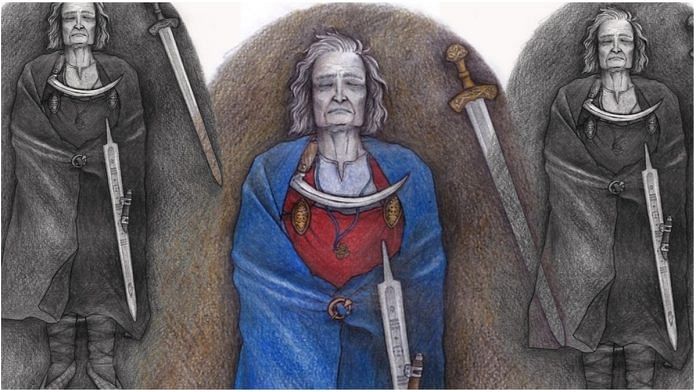1,000-year-old grave indicates non-binary people were respected in iron age
Scientists have confirmed that the remains from a 1,000-year-old grave from Finland, which was long assumed to be of a woman, were actually of a non-binary person.
The findings from the grave suggests that contrary to popular beliefs about gender roles in ancient European civilisations, non-binary people were respected members of their communities.
Non-binary is an umbrella term for gender identities that are not exclusively masculine or feminine. Non-binary people may identify as belonging to a third gender, or more than one gender, or may consider themselves to not belong to any gender.
According to the DNA analysis of the iron age grave in Finland, the remains belong to a high-status non-binary person.
The grave contained jewellery, such as brooches, as well as fragments of woolen clothing, which suggested the dead person was dressed in feminine costume of the time. However, there was a hiltless sword placed on the person’s left side, which was often associated with masculinity at the time.
DNA analysis showed that the person had a genetic condition known as the Klinefelter syndrome. Usually, a female has two X chromosomes and a male has one X and one Y chromosome. Males born with Klinefelter’s syndrome have an extra copy of the X chromosome (XXY), with have low testosterone and reduced muscle mass, facial hair and body hair. Read more here.
Also read: Coronavirus mutated same amount during pandemic as humans since Homo habilis walked earth
Apes have specific gestures to say hello and goodbye
Just like humans have specific greetings to start and end conversations, apes seem to do something similar to say hello and goodbye.
Researchers have found that apes purposefully use signals to start and then end interactions. Such behaviour had not been seen outside of the human species until now.
Social and power dynamics between the interacting apes were also found to affect the communication efforts, which according to the researchers mirrors patterns similar to human politeness. Sharing intentions and working together on a common goal leads to a mutual sense of obligation. This social behaviour was long thought to be unique to humans.
After analyzing 1,242 interactions within groups of bonobos and chimpanzees in zoos, the researchers found that the apes frequently gaze at and communicate with each other to start and end interactions.
The closer the apes are to each other, the shorter the duration of their entry and exit phases. Read more here.
Gut microbes from young mice can reverse brain ageing in older adults
Scientists have now found that transferring gut microbes from younger mice into older mice can reverse brain ageing — an advance that paves the way for microbial-based interventions to slow down brain ageing and associated cognitive problems.
Researchers across the world are increasingly suggesting that the microbes that live in our gut have a larger role to play in the bodies’ overall health than what is currently understood.
In the latest study, scientists showed that by transplanting microbes from young into old animals they could rejuvenate aspects of brain and immune function.
The team also found evidence of improved learning ability and cognitive function in the animals. However, they acknowledged that much more work is needed to see how these findings could be translated in humans.
According to the team, the study opens up possibilities in the future to modulate gut microbiota as a therapeutic target to influence brain health. Read more here.
Also read: CSE study finds Indian pollution boards not very transparent with data, 67% is top score
New species of carnivorous plants discovered
Scientists have discovered a new carnivorous plant in North America, which uses tall flowering stems coated with sticky hairs that trap small insects. The plant acquires more than half of its nitrogen, one of the key nutrients for plants, by digesting these insects.
The species, known to scientists as Triantha occidentalis, grows in wetlands and bogs.
The team also found out how the plant differentiates its food from insects that are essential for the plant to pollinate. The plant’s glandular hairs are not very sticky, and can only entrap very small insects. Larger and stronger bees and butterflies, which act as its pollinators, are not captured, according to the team. Read more here.
Dragon-like pterosaur fossils discovered in Australia
The fossils of the largest flying reptile, a pterosaur that looked like how humans imagine dragons, have been discovered in Australia.
Named Thapunngaka shawi, the pterosaur had a spear-like mouth and a wingspan around seven metres.
According to the team, the animal would have been quite savage, with its skull alone measuring just over one metre long. It had around 40 teeth, perfectly suited to grasping fishes.
Even though pterosaurs could fly, they were nothing like birds. These reptiles were the very first back-boned animals to master flight. Due to their thin-walled and relatively hollow bones, fossilised remains of pterosaurs are rare and often poorly preserved.
The discovery of this new species contributes to an improved understanding of pterosaur diversity. Read more here.
Also read: Chandrayaan-2 confirms water on Moon surface, distinguishes H2O-rich areas from lunar deserts






